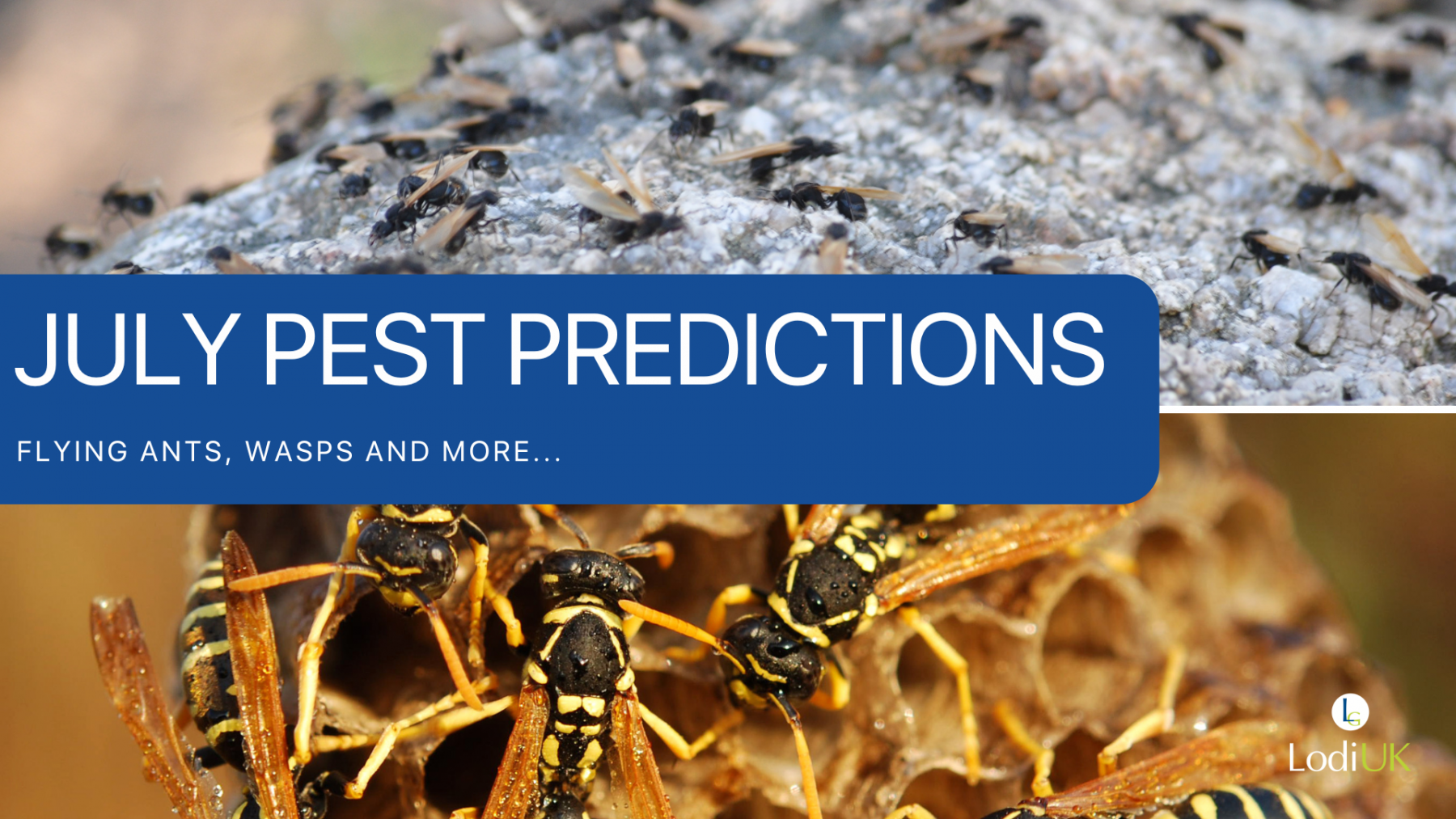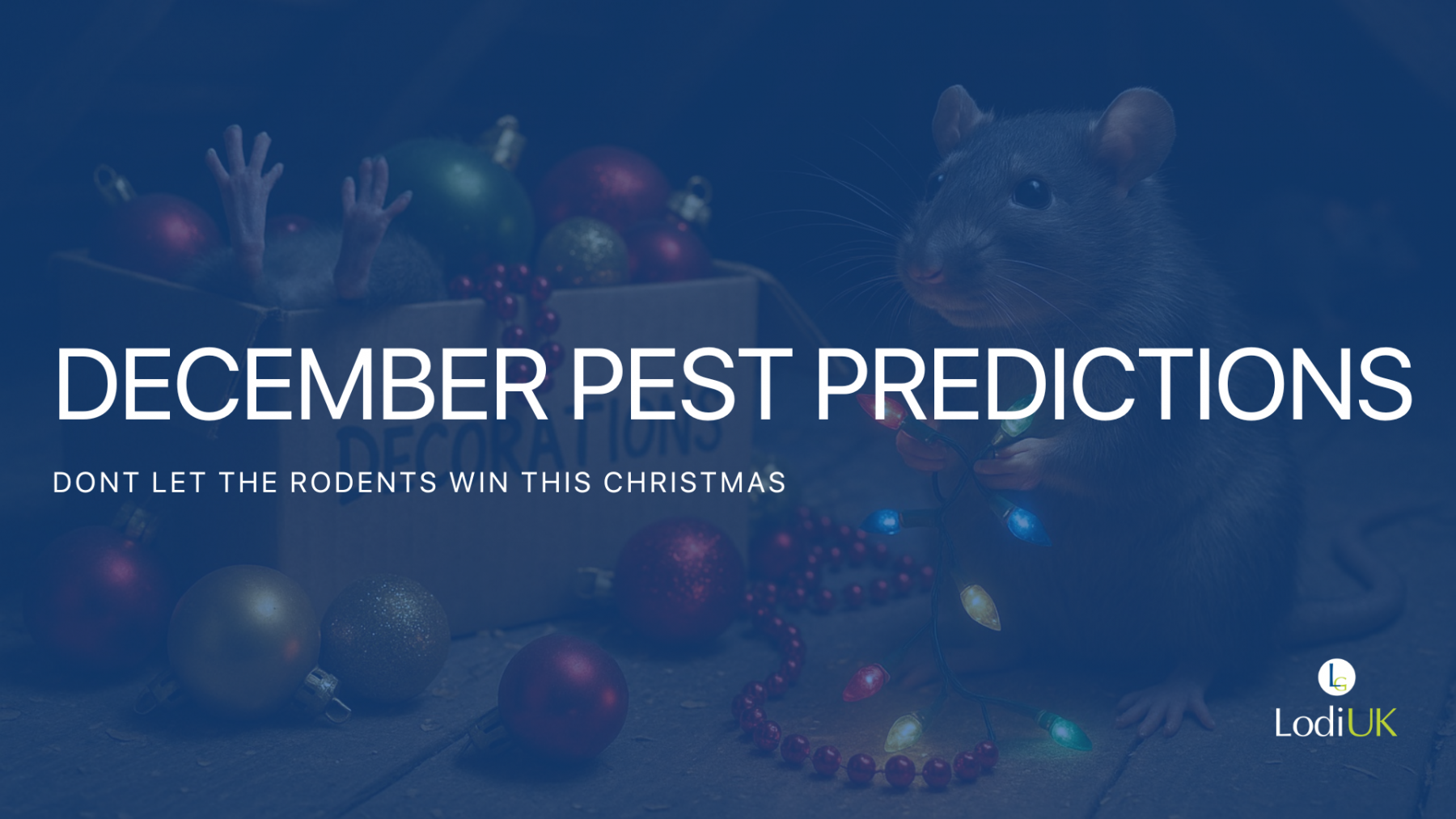
Summer is in full swing, and with it comes a whole new wave of pest activity across the UK. July is one of the busiest months for insects, thanks to the combination of heat, humidity, and longer daylight hours. Whether you’re trying to enjoy your garden, hosting a barbecue, or simply keeping your home cool with the windows open, pests have a knack for turning up uninvited.
This month, we’re taking a closer look at one of the UK’s most misunderstood (and most talked-about) pest events known as flying ant day, alongside a rise in wasp sightings and a few other pests making an appearance in homes and gardens alike.
Flying Ant Frenzy: One of the Biggest Years Yet?
If you thought the skies looked unusually busy this summer, you’re not imagining things, 2025 is shaping up to be one of the biggest flying ant years in recent memory. Across the UK, people have reported early and intense swarms of flying ants appearing in gardens, driveways, and parks. This year's warm, damp conditions have created the perfect environment for the ants’ annual mating flight and social media has been buzzing with videos and sightings from all corners of the country.
Flying ant day, despite the name, isn’t limited to a single day. It’s a seasonal phenomenon where winged ants, mostly black garden ants, take to the air to reproduce. These swarms usually begin in mid-July, triggered by a warm spell after rain, and can last for several days or occur in waves across different regions. During these nuptial flights, males and young queens leave their nests to mate. Once the job’s done, the males die off, and the queens search for a place to start a new colony.
It can be a dramatic sight, ants suddenly emerging from pavements or taking over patios in huge numbers. While it might look like an infestation, the reality is that it’s just nature doing its thing. Flying ants don’t bite or sting, and they aren’t interested in your food - they’re focused on reproduction. You might notice them gathering around light sources, windows, or door frames as they navigate flight. Some may find their way indoors, but they won’t stick around for long.
If you want to keep them out, the best action is to keep windows closed during peak swarming times and use mesh screens where possible. If they do find their way inside, a quick sweep or vacuum will do the trick. Most importantly, don’t panic, this isn’t a permanent invasion, and it doesn’t necessarily mean you have a nest inside your home. This year's surge might be surprising, but it’s a completely natural part of the ant life cycle.
Wasps: More Than Just a Nuisance This Summer
It’s not just flying ants making themselves known this month, wasps are also out in bigger numbers than we’ve seen in recent years. Warmer spring weather and fewer late frosts have given queen wasps a better start to the season, meaning more nests are thriving across the country.
For professional pest controllers, this is welcome news as it keeps them thriving! But for the rest of us, particularly when we’re trying to enjoy an alfresco lunch or sip a drink in the garden, it’s a little less exciting. Wasps are attracted to sugary drinks, raw meat & fruit, and anything they can scavenge, making barbecues and our ‘picky bits’ tea a prime target.
As annoying as they are, it’s important to remember that wasps aren’t just flying pests, they can be dangerous too. Not everyone knows if they’re allergic to wasp stings until it’s too late. Reactions can range from mild swelling to serious anaphylaxis, even if you’ve been stung before without an issue. This makes it especially important to stay vigilant.
If you notice regular wasp activity near your home, particularly wasps flying in and out of the same area, like under roof tiles or into wall cavities - it could be a sign there’s a nest nearby. In this case, it’s always best to call in a local professional pest controller. Trying to remove a wasp nest yourself can be risky and usually ends with the wasps getting angry… and stingy.
So, while their buzzing might just be annoying to some, it’s always worth taking wasps seriously. Keep an eye out, keep drinks covered, and if in doubt, seek expert advice.
Special Mentions: Slugs, Flies & Aphids
While flying ants and wasps are stealing the spotlight this month, they’re not the only pests making themselves known in July.
Slugs continue to be a nightmare for gardeners, especially after wet weather. These slimy pests can decimate flower beds, veggie patches, and young seedlings overnight. They love damp, shaded areas and tend to come out in the evening or early morning, leaving behind shiny trails on patios, paths, and even indoors in some cases. Keep your garden tidy and avoid overwatering in the evenings to make conditions less appealing.
House flies are also at their peak in July, with the heat speeding up their breeding cycle. Open windows and outdoor eating attract them into our homes, and once inside, they can be difficult to get rid of. Regular cleaning of bins, drains, and food prep areas is your best defence. If you spot clusters of flies at windows or constant buzzing in one room, you may have a breeding site nearby.
Aphids, also known as greenfly or blackfly, are another summer pest to look out for particularly if you’re into gardening. They gather in clusters on the undersides of leaves, stems, and buds, feeding on plant sap and weakening healthy growth. They’re especially fond of roses, beans, and tomatoes. Left unchecked, they can cause real damage. Look out for curled leaves, sticky residue (known as honeydew), and an increase in ants, which are attracted to the sugary honeydew aphids produce.
July’s warmer, more humid weather brings out all kinds of pest activity, from the dramatic (flying ants) to the sneaky (aphids on your prize roses). While most of these pests are just a seasonal inconvenience, some (like wasps) deserve a little extra caution. Whether you’re dealing with a garden invasion or dodging stingers at a barbecue, staying informed is the best way to keep your summer pest-free.





